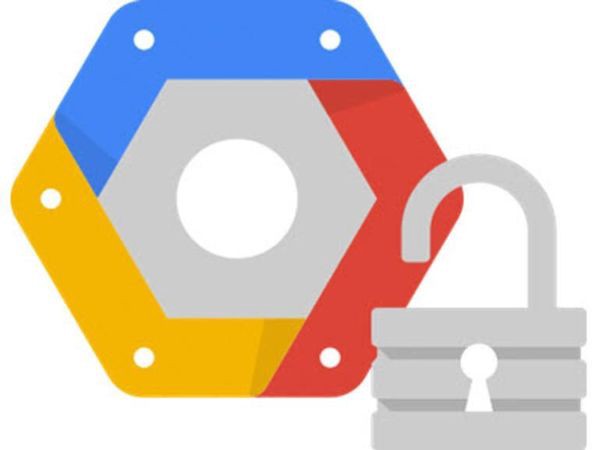Google Cloud Platform (GCP) is a popular platform for big data analytics, cloud computing, and machine learning. The Google Cloud Security Checklist can help you stay secure while using GCP. It will walk you through 9 steps to keep your environment safe from data breaches so that your business can focus on what it does best.
Why is cloud security important?
Data breaches are big news. A recent study by the Identity Theft Resource Center shows that there were nearly 500 data breaches and over 191 million records exposed worldwide. It’s no wonder Fortune 500 companies invest $100 billion annually to protect themselves from cyberattacks.
Also Read: When was panasonic group founded
Data breaches can have a devastating effect on businesses. In fact, the average cost of a data breach is now more than $4 million. The good news is that there are steps you can take to secure your GCP cloud environment and protect your data by performing GCP Security.
The Google Cloud Security Checklist will help you:
- Understand the security risks associated with using GCP
- Harden your environment against attacks
- Protect your data from unauthorized access or theft
- Secure your applications and workloads running in the cloud
9 Steps to maintain GCP Security
Follow these nine steps to keep your GCP cloud environment safe from data breaches:
Step One: Understand the Security Risks Associated with GCP
Before you can secure your environment, you need to understand the security risks associated with using GCP. The Google Cloud Security Checklist will help you do that. It provides an overview of the threats that are specific to GCP and explains how to protect yourself from them.
Step Two: Harden Your Environment Against Attacks
Harden your environment against attacks by implementing best practices for securing your systems and networks. The Google Cloud Security Checklist provides tips for doing this, including recommendations for setting up firewalls, configuring load balancers, and protecting your data.
Step Three: Protect Your Data from Unauthorized Access or Theft
Protect your data from unauthorized access or theft by implementing encryption. The Google Cloud Security Checklist shows you how to encrypt your data at rest and in transit, implement access control measures for GCP resources, and use identity and authentication tools such as Authenticator or OpenID Connect.
Step Four: Secure Your Applications and Workloads Running on GCP
Secure your applications running on the cloud using a combination of software-defined perimeter (SDP) technology—which provides micro segmentation capabilities—and virtual private clouds (VPCs). Learn about best practices for web security testing of application components like VMs with SELinux/AppArmor profiles, Docker containers with AppArmor profiles, Linux security modules (LSM), SSH key pairs, IAM policies; operating systems; and networks.
Step Five: Control Access to GCP Resources
Control access to your GCP resources using IAM policies and groups. The Google Cloud Security Checklist explains how to create IAM policies that give you granular control over that can be accessed, and how to use groups to simplify management of large numbers of users.
Step Six: Use a Multi-Factor Authentication Mechanism
Use a multi-factor authentication mechanism such as Authenticator or OpenID Connect to add an extra layer of security to your account. This will help protect your account from unauthorized access even if your password is compromised.
Step Seven: Monitor Your Environment for Suspicious Activity
Monitor your environment for suspicious activity by setting up logging and monitoring. The Google Cloud Security Checklist shows you how to set up logs for GCP resources, monitor your environment with Stackdriver Logging and Monitoring tools, configure monitoring alerts in Stackdriver Monitoring, and create dashboards that provide visibility into the health of your environment.
Step Eight: Keep Your Account Safe
Keeping your account safe is critical if you want to keep attackers out of all areas where they might gain access to sensitive data or perform other damaging actions on your behalf. Take steps like using long passwords—passwords longer than 20 characters are harder for hackers to crack—and enabling two-factor authentication (if it’s available). You can also limit who has permission to use admin accounts by creating IAM policies that control access to GCP resources.
Step Nine: Follow the Google Cloud Security Checklist
Using the checklists included in this document can help you secure your environment against data breaches and other attacks. They provide detailed information about securing specific areas of concern, including how to set up firewalls, configure load balancers, encrypt data at rest and in transit, implement access control measures for GCP resources, use identity and authentication tools such as Authenticator or OpenID Connect; monitor your environment for suspicious activity with Stackdriver Logging and Monitoring tools; create IAM policies that give you granular control over who has permission to access which resources on GCP; keep track of user actions using Audit logs so you always know what happens when it comes to managing your GCP resources; and follow a multi-factor authentication mechanism such as Authenticator or OpenID Connect.
Wrapping Up…
We hope this Google cloud security checklist will help you secure your GCP environment. It provides detailed instructions on how to secure your data at rest and in transit, limit access to resources using IAM policies and groups, set up logging and monitoring for suspicious activity, and keep your account safe. You can follow the steps mentioned above in this article to help protect your organization from data breaches and other malicious activities.









